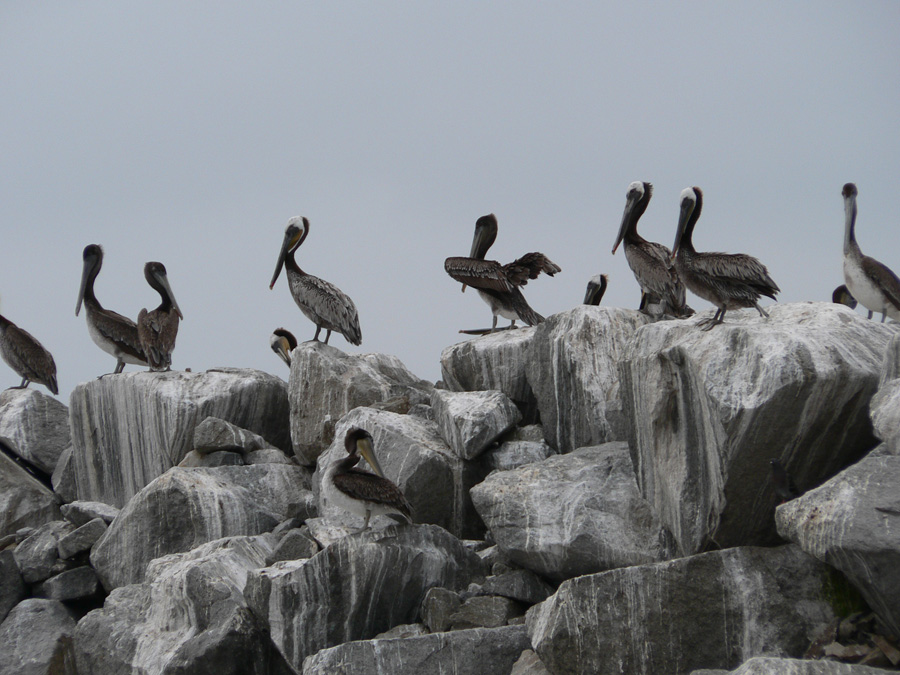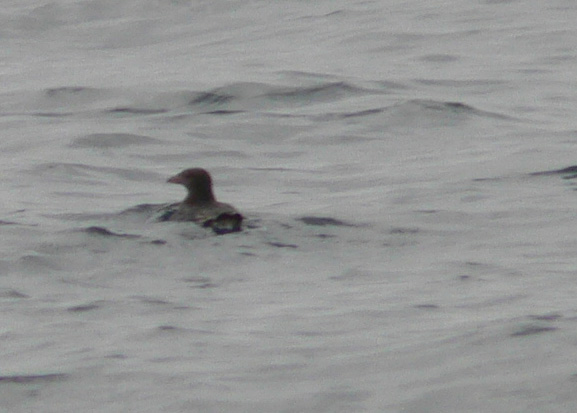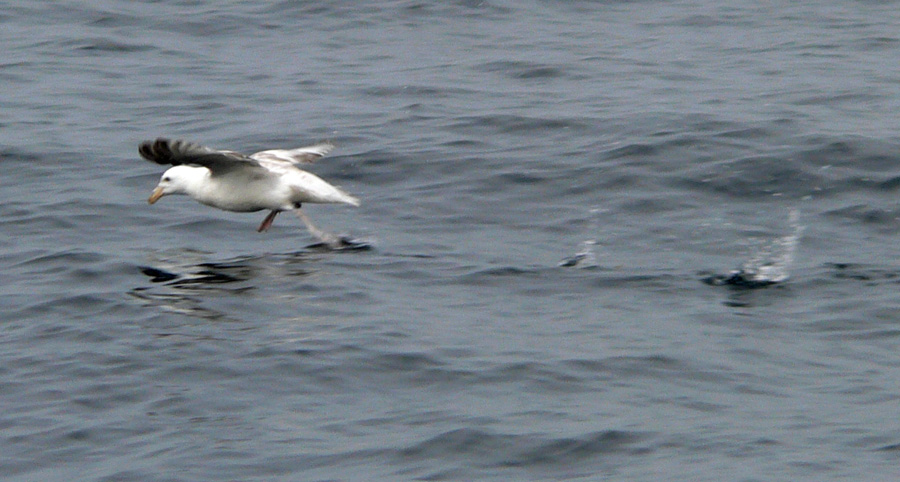#421 and #422 Out of Dana Point
Saturday, May 10, I got up bright and early to catch a boat out of Dana Point that the Sea & Sage Audubon Society had chartered for a four-hour cruise starting at 7:00 A.M. The goal was just to see what we could find in Orange County Waters. May is not the best time of year for pelagic birding, but the trip a few months ago had been canceled, and there’s usually something out there if you look. Plus it would be my first West Coast pelagic.
The route was out a a couple of miles to sea, north to roughly Newport Beach and then back a little closer to shore. This limited us to relatively near-shore species, but that still offered some good possibilities.
The parking lot produced Rock Pigeon, American Crow, and Black-crowned Night-heron (three perched on a small pier). Before we even left the harbor we had Double-crested Cormorant, Hermann’s Gull, Brown Pelican (in the hundreds), American Crow, and too many California, Western, and Ring-billed Gulls to count. I spotted a Spotted Sandpiper on the jetty. We were barely out of the harbor when we added Caspian Tern and Brandt’s Cormorant to the trip list.

At first we mostly just saw more gulls and pelicans, but once we got a little ways offshore we picked up our first real pelagic bird: a Sooty Shearwater. Not a life bird for me. I’ve had them on East Coast pelagics, but at least one for my California list, and the first Shearwater I’ve seen in a couple of years.
At 7:42 we pick our first loon of the day: Red-throated, a relatively common species around here, and even commoner around New York.
At 8:05 we get our first phalaropes, 2 Red-necked Phalaropes in the water, off the starboard side. However the leader doesn’t see them, and the boat blows right past. (I tend to think most pelagics go way too fast.) Oh well, there are more out here.
8:30 A.M: I’m beginning to think the trip will be a bust when we spot a Rhinoceros Auklet! My first life bird of the day, #421. Some Least Terns also fly by.

(Yes, I know the photos are even worse than usual. You try taking pictures of fast moving birds far away from a rocking boat with a point-and-shoot camera.)
8:45: An unidentified warbler tries to land on the boat. Sometimes land birds get a little lost and end up way further out to sea than they should be. A boat like ours can be a real savior. We’re all cheering for it, but it does not land on the boat. I hope it finds safe ground elsewhere.
9:02: Our second passerine since we left harbor: a Hummingbird flies past the boat. No clue which species though, and whether it’s in trouble or if this is a reasonable location for a migrating hummer.
9:10: Rizzo’s Dolphins! Our first marine mammal.
Then, Pink-footed Shearwater! This is easily distinguishable form the Sooty Shearwater because it has a lot more white on the belly and under the wings. It’s not nearly as dark overall. It’s my second life bird of the day, #422.
9:20: A Pomarine Jaeger dives in front of the boat and crosses our bow. What a beautiful bird, albeit a mean one. (Jaegers bully gulls. That’s how tough they are.)
9:29: Things are really picking up. Northern Fulmar!
9:35: The boat slows down for a fin whale. I never see it, but I do wish the captain would also slow down more for the birds, and be a little more patient.
9:43: Four loons fly past on the left and then cross in front of the boat. Could they be Pacific? If so, that’s number 423, but the leader isn’t sure; and neither am I. Before I do this again, I’ll have to make sure I’m up-to-date on the field marks that distinguish flying loons.
Fashion Island comes into view. (We never really left sight of land.)
9:55: two Phalaropes fly by; and six or seven Sooties are sitting in the water. Why won’t the boat slow down? Apparently the captain really has to make sure we get back by our scheduled 11:00 arrival time.
10:15: 3 more phalaropes and our second warbler. This one looks like it might be a Townsend’s. We’re not too far out, so hopefully it can find land when it wants too.
10:20: We pull up for another Red-necked Phalarope. I’m getting a little blasé about these birds that were lifers just a couple of weeks ago.
10:25: Another Northern Fulmar, this time a White-faced variant.

10:35: Our largest flock of Sooty Shearwaters yet, roughly 20.
10:41: The boat stops for 3 Rhinoceros Auklets. There are also about 3 more Red-necked Phalaropes in the water.
Finally we pull into the dock just a few minutes late, about 11:05. Final bird of the day? This Green Heron on the rocks after we docked:

Total definite species count was 23 + Hummingbird and Warbler sps.:
- Red-throated Loon
- Northern Fulmar
- Pink-footed Shearwater
- Sooty Shearwater
- Brown Pelican
- Brandt’s Cormorant
- Double-crested Cormorant
- Green Heron
- Black-crowned Night-Heron
- Red-tailed Hawk
- Spotted Sandpiper
- Red-necked Phalarope
- Heermann’s Gull
- Ring-billed Gull
- California Gull
- Western Gull
- Least Tern
- Caspian Tern
- Elegant Tern
- Pomarine Jaeger
- Rhinoceros Auklet
- Rock Pigeon
- hummingbird sp.
- American Crow
- warbler sp.

June 2nd, 2008 at 11:04 PM
I’m jealous. My first pelagic was scheduled for the Gulf two weeks ago but was canceled when the Captain chopped a finger trying to get the boat ready for the Coast Guard inspection. Having a hard time closing the gap when you are off to China and cruising the Pacific. Still holding just under 300.